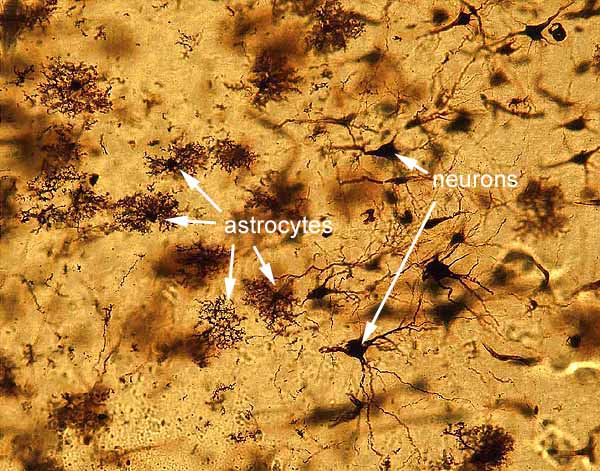


 |
| Neuron preparation by Ramón y Cajal |
In a Golgi preparation of nervous tissue, a black silver precipitate forms throughout the processes of a few cells while most cells are unstained. Which cells stain and which ones remain transparent is more-or-less random, although masters of the technique can control to some extent which classes of cells may be stained. Sections are typically quite thick to reveal as much as possible of the dendritic arbor of the select cells.
In the specimen of cerebral cortex illustrated here, a number of astrocytes are visible as well as a few pyramidal neurons.
The shape of the astrocytic processes, which is characteristic of astrocytes located in gray matter, is the basis for calling these "protoplasmic" astrocytes. (Astrocytes in white matter have processes which are typically somewhat straighter and less fluid in appearance; these are called "fibrous" astrocytes.)
The large neurons may be recognized as pyramidal cells by the appearance on each of the base of its large apical dendrite, extending toward the cortical surface (beyond the left side of the image).
Comments and questions: dgking@siu.edu
SIUC / School
of Medicine / Anatomy / David
King
https://histology.siu.edu/ssb/NM032b.htm
Last updated: 12 August 2021 / dgk